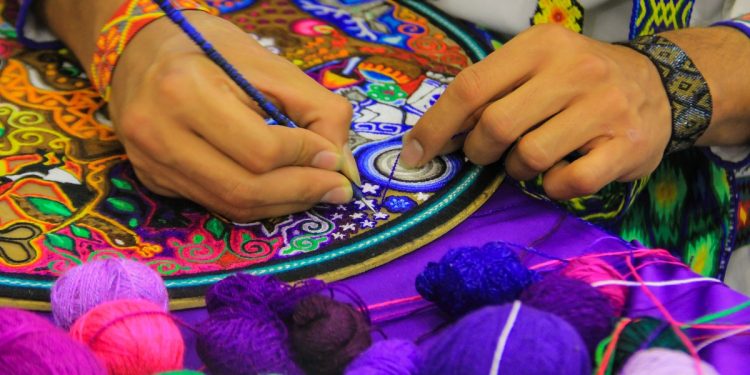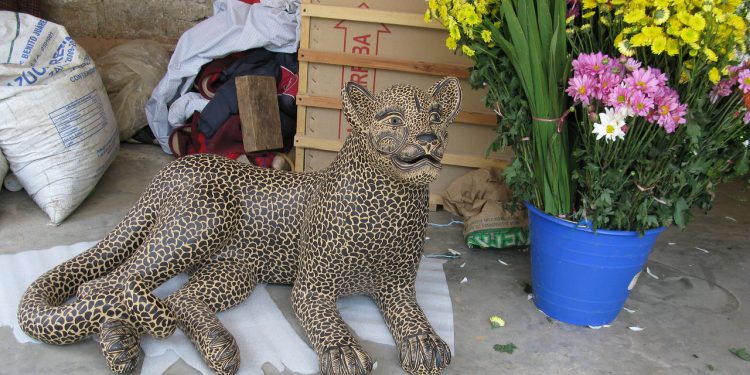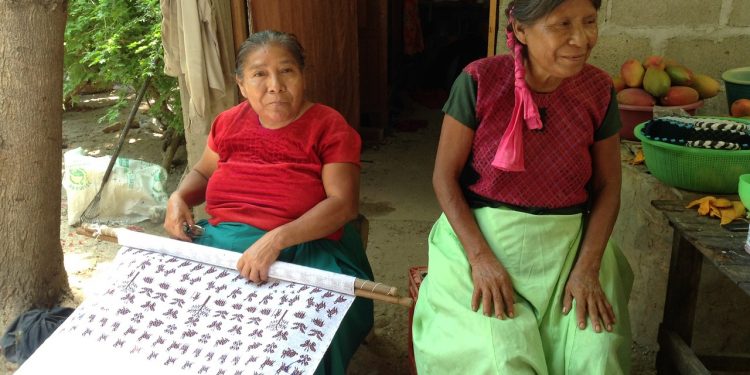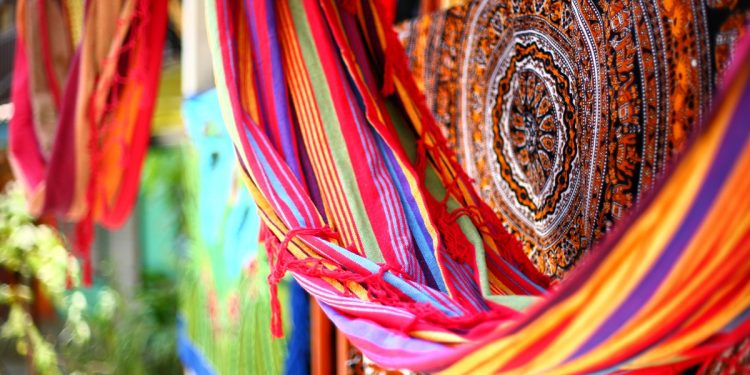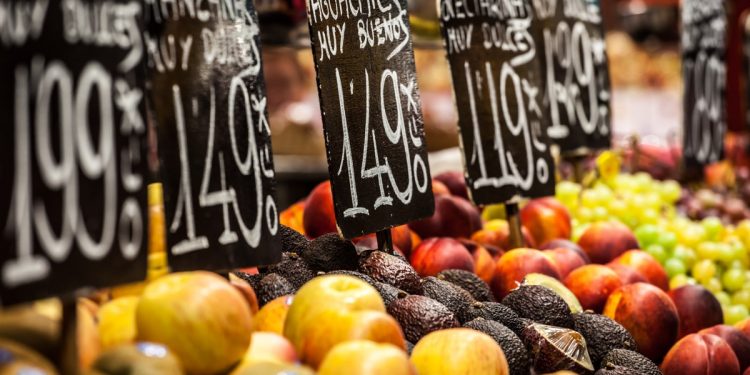Mexico offers you the opportunity to acquire artesania (handicrafts) produced locally with materials sourced from Mexico’s diverse natural habitats.
A good place to scout and buy handicrafts is across Mexico’s rural towns and villages, where local people, known as artesanos, make their living by creating the art works. Mexican handicrafts range from common trinkets to masterful works of fine art—and everything in-between. The types of handicrafts which predominate in each region usually reflect the natural materials available locally: woods, metals, textiles, leathers, yarns and clay are the most common.
Some states run government-sponsored “artisan markets” in the state’s capital city, where tourists and locals may find arts and handicrafts that are created in the state’s rural villages conveniently mustered in one place. The markets also provide an organized commercial outlet for artisans who otherwise do not have the resources to market their art.
In principal tourist locations like Mexico City, Guadalajara, San Miguel de Allende, Oaxaca and Puerto Vallarta, you can find artisan markets which bring handicrafts together from the entire region and/or the country—and many other towns and cities have artisan markets that set-up near the town center at least once a week.
Another significant outlet for handicrafts in Mexico is the Feria Maestros del Arte, an annual event which brings together the best artisans from all over Mexico.
Principal handicrafts available for purchase in Mexico
Masks: Hand-crafted masks made in Mexico are created using wood or papier-mâché. Mask-making in Mexico dates back to pre-Hispanic times and, although some are sold for rituals and festivals, most are intended as fine wall-mounted ornaments. The finest wooden masks may be sought in Tocuaro.
Bags: Made principally from leather or textile, the bags come in a range of styles, and colors, and often feature unique, intricate, design-work on the outside. You can find bags at most markets in towns and cities across Mexico.
Silver: Mexico’s colonial wealth, particularly in the country’s heartland, was built upon the rich lodes of silver buried in the mountains. Even today, Mexico is one of the world’s top silver-producing countries. You can find silver jewelry and other artworks made using silver everywhere in Mexico, although the colonial city of Taxco is the most renowned location to acquire it. When you visit Taxco to buy silver, it’s worth scouting the small alleyways and streets away from the center of town to find the best offers.
Copper: Copper is mined, smelted, and worked in Mexico and incorporated into a number of crafts including plates, ornaments, bowls and jugs. This highly attractive metal is also worked into some of the finest examples of hand-made Mexican furniture. At Santa Clara del Cobre, a small village near Pátzcuaro, you can watch as artisans beat the copper by hand using age-old traditional techniques as well as choose hand-made copper wares from a wide range on display in local shops and markets in the village.
Wood: Whether natural or lacquered, you’ll find an enormous selection of woodcraft in Mexico. Most are made from pinewood; some of the most beautiful furniture made in Mexico is created using fine mahogany woods from licensed forests in southern Mexico. Lacquered box chests, trays, and even trunks are hand-crafted using scented woods grown around the village of Olinala, in Guerrero state. The naturally-scented wood is sourced from the fragrant Aloe tree, although as demand for this wood has outstripped supply, many examples of the items you see in markets are made from pinewood and later scented using natural essences.
Alebrijes: An impressively-attractive Mexican craft work creates what are called Alebrijes: figurines depicting animals or other mythical creatures. There are two broad categories of Alebrije: small and large. The small ones are hand-carved from pieces of wood and beautifully painted in bright colors; the large ones are made by sculpting metal wires, covering the structure in papier-mâché, and finally the art work is beautifully and painstakingly hand-painted; the latter type are quite expensive, but each is a unique work of fine art.
Gourds: The hard shells from certain types of squash fruits have been used in Mexico for centuries to create bowls, cups, and other small storage vessels. The most common gourds are sourced from the fruit of the Jicara trees. The most widely employed gourd decoration technique involves coating the gourd with layers of paste or paint, and allowing each layer to harden before applying the next one. The final layer is hand-painted with the artisan’s own unique design and finally sealed with an oil varnish to protect the work.
Ceramics and Earthenware: Pottery in Mexico dates back to the pre-Columbia era, although it was not until the Europeans arrived that techniques like the potter’s wheel were introduced. Ceramics is the most practiced handicraft in Mexico and you’re spoiled for choice here when it comes to purchasing ceramics: from basic clay plates and bowls, through to practical and hard-wearing tableware and kitchen utensils for everyday use, to elaborately decorated works of art. Regions tend to specialize in different materials, for example, Oaxaca is famous for its black clay, Puebla for its durable and very attractive Talavera. The more elaborate pieces which are batch-made are often individually hand-painted making each one unique.
Paintings on Bark: You can find colorful designs painted onto what looks like brown paper; the material is called amate, and is made from tree bark. The quality varies; most markets peddle run-of-the-mill examples of this art form; however, very fine works of art painted onto good quality amate are available if you look carefully. Feel the paper and, in particular, pay attention to the fine detail of the paintwork. More skillful works of art are painted onto better quality papers; the price will be higher too.
Textiles: Hand-made clothes may be found in markets across Mexico, often encompassing some type of colorful embroidery design woven or stitched into white fabric. Look out for spectacular tablecloths too: the best ones emanate from the states of Michoacan and Oaxaca; if you buy elsewhere, ask the sellers you encounter where in Mexico the ones they are offering originate from.
Musical Instruments: If you’re looking for a classical guitar, violin, or cello you may find the instrument you’re looking for in Paracho, one of Patzcuaro’s Lakeside Villages. Most of the classical guitars you buy in Mexico will emanate from here.
Hammocks: Although you can find hammocks in markets nation-wide, the Yucatan region, and specifically Merida, is the place to buy hammocks in Mexico. Mexican hammocks are woven in a variety of colors and patterns, although not all hammocks are created equal: there are certain features which need to be considered closely if you are going to procure a hammock that will last you and be comfortable to lie in. Here’s a guide about Buying Hammocks in Mexico
Mexico in your inbox
Our free newsletter about Mexico brings you a monthly round-up of recently published stories and opportunities, as well as gems from our archives.

